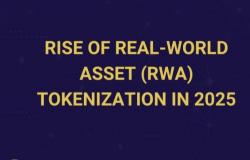
Decentralized Finance has evolved from an experimental concept into a foundational pillar of the global financial system. As of Q4 2025, DeFi protocols collectively manage $185 billion in total value locked, representing a remarkable recovery from the bear market lows and demonstrating sustained institutional interest in blockchain-based financial infrastructure. This milestone reflects not merely speculative fervor but rather a fundamental transformation in how financial services are delivered, regulated, and accessed by individuals and institutions worldwide.
The maturation of DeFi represents one of the most significant innovations in financial technology since the advent of online banking. By leveraging smart contracts, blockchain technology, and cryptographic security, DeFi protocols have created an alternative financial system that operates transparently, efficiently, and without traditional intermediaries. The integration of regulatory compliance frameworks, institutional-grade security measures, and user-friendly interfaces has positioned DeFi to challenge and complement traditional finance in ways that were unimaginable just five years ago.
Institutional Participation Drives DeFi Growth

The most notable development in the DeFi ecosystem during 2025 has been the substantial increase in institutional participation. Traditional financial institutions, which were once skeptical or dismissive of decentralized finance, have increasingly recognized the efficiency gains and innovative capabilities that DeFi protocols offer. According to data from DeFi Llama, institutional capital now represents approximately 38% of total value locked in DeFi protocols, up from less than 10% in 2023.
Major banks and asset managers have deployed capital into DeFi lending protocols to earn yields that consistently exceed those available in traditional money markets. Aave, the leading DeFi lending protocol, hosts over $42 billion in deposits, with institutional participants contributing more than $15 billion of that total. These institutions utilize regulated custody solutions and compliance overlays that enable them to participate in DeFi while maintaining adherence to regulatory requirements and internal risk management policies.
The insurance sector has been particularly active in DeFi. Nexus Mutual and similar decentralized insurance protocols have underwritten over $8 billion in smart contract coverage, providing institutional investors with risk mitigation tools that were previously unavailable in the DeFi space. This insurance infrastructure has been crucial in convincing risk-averse institutions to allocate capital to DeFi protocols, as it addresses one of the primary concerns about smart contract vulnerabilities and protocol exploits.
Regulatory Compliance Frameworks Emerge
Regulatory clarity has been instrumental in facilitating institutional adoption of DeFi. The regulatory landscape in 2025 has evolved significantly from the uncertain environment that prevailed in previous years. The United States has established comprehensive guidelines for DeFi protocols that implement know-your-customer procedures and anti-money laundering controls while maintaining permissionless access for compliant users.
The European Union's Markets in Crypto-Assets regulation has created a standardized framework that many DeFi protocols have adopted. Protocols that register as virtual asset service providers can offer their services throughout the EU with regulatory certainty, provided they implement appropriate compliance measures. This regulatory clarity has enabled DeFi protocols to establish partnerships with traditional financial institutions that were previously impossible due to compliance concerns.
Compliance infrastructure has advanced considerably. Privacy-preserving identity verification systems, built using zero-knowledge proof technology, enable DeFi protocols to verify user identity and regulatory compliance without compromising the pseudonymous nature of blockchain transactions. These systems satisfy regulatory requirements while preserving the privacy and censorship resistance that are fundamental to DeFi's value proposition.
Several jurisdictions have established regulatory sandboxes specifically for DeFi innovation. Singapore's Monetary Authority and Switzerland's FINMA have created frameworks that allow DeFi protocols to operate with regulatory supervision while developing compliance approaches appropriate for decentralized systems. These sandbox programs have produced best practices that are being adopted globally.
Lending and Borrowing Protocols Lead Adoption
Lending and borrowing protocols continue to represent the largest category within DeFi by total value locked. These protocols have demonstrated clear value propositions that resonate with both retail and institutional users. Aave, Compound, and MakerDAO collectively manage over $95 billion in deposits, facilitating efficient capital allocation without traditional banking intermediaries.
The efficiency advantages of DeFi lending are substantial. Traditional lending involves numerous intermediaries, each extracting fees and requiring time for processing. DeFi lending protocols execute automatically through smart contracts, providing instant liquidity to borrowers and immediate yield to depositors. Interest rates adjust algorithmically based on supply and demand, ensuring efficient capital allocation without manual rate-setting by committees.
Institutional borrowers have found DeFi lending particularly attractive for short-term liquidity management. Trading firms use DeFi protocols to access leverage for arbitrage strategies, while corporations utilize stablecoin lending markets for cash management. The 24/7 availability and instant settlement of DeFi lending provides operational advantages that traditional finance cannot match.
The diversity of collateral types has expanded significantly. While earlier DeFi lending focused primarily on cryptocurrency collateral, 2025 has seen substantial growth in real-world asset collateral. Tokenized securities, real estate, and commodities now serve as collateral for DeFi loans, bridging traditional and decentralized finance. This expansion has increased the addressable market for DeFi lending and demonstrated that blockchain-based financial infrastructure can accommodate diverse asset types.
Decentralized Exchanges Achieve Market Maturity
Decentralized exchanges have matured into credible competitors to centralized crypto exchanges. Uniswap, the leading decentralized exchange, processes over $6 billion in daily trading volume, with total transaction volume exceeding $850 billion for 2025. The automated market maker model that Uniswap pioneered has proven remarkably effective, providing liquidity for thousands of trading pairs without traditional order books or market makers.
The development of concentrated liquidity mechanisms has dramatically improved capital efficiency for liquidity providers. Uniswap v3 and subsequent innovations allow liquidity providers to specify price ranges where their capital will be utilized, enabling them to earn higher returns on deployed capital. This efficiency improvement has attracted professional market makers to DeFi, further improving liquidity depth and execution quality.
Layer 2 integration has solved the high transaction fee problem that previously limited decentralized exchange adoption. DEX deployments on Arbitrum, Optimism, and other Layer 2 networks process transactions with fees below $0.10, making decentralized exchanges economically competitive with centralized alternatives for most trading scenarios. The combination of low fees and non-custodial trading has compelling appeal for traders concerned about counterparty risk.
Cross-chain DEX protocols have emerged as significant innovations. Thorchain and similar protocols enable native asset swaps across different blockchains without wrapped tokens or centralized bridges. This interoperability infrastructure addresses one of the primary limitations of earlier DeFi systems and enables truly cross-chain liquidity provision.
Derivatives and Structured Products Gain Traction
The derivatives sector within DeFi has experienced explosive growth in 2025. Perpetual futures exchanges, led by GMX and dYdX, have processed over $240 billion in trading volume during Q4 2025. These platforms offer leverage trading for hundreds of cryptocurrency pairs, providing sophisticated traders with tools comparable to those available on centralized derivatives exchanges.
The decentralized nature of these protocols offers distinct advantages. Users maintain custody of their assets until the moment of trade execution, eliminating the counterparty risk inherent in centralized exchanges. The transparent on-chain settlement ensures that protocol reserves always match liabilities, preventing the insolvency scenarios that have plagued centralized platforms.
Options markets have developed sophisticated infrastructure on-chain. Protocols like Lyra and Hegic provide option trading functionality with automated market making and dynamic pricing based on Black-Scholes models adapted for crypto volatility. The total notional value of options traded on DeFi platforms has reached $18 billion monthly, indicating substantial market demand for these instruments.
Structured products have emerged as a growing category. Yield optimization protocols like Yearn Finance automatically allocate capital across lending protocols, liquidity pools, and other yield-generating opportunities to maximize returns for depositors. These products effectively function as actively managed funds that operate entirely through smart contracts without human intermediaries.
Stablecoin Infrastructure Becomes Systemic
Stablecoins have become the fundamental infrastructure layer for DeFi, serving as the primary medium of exchange and unit of account. The stablecoin market has reached $280 billion in total market capitalization, with USDC and USDT dominating as the preferred stablecoins for DeFi applications. The availability of dollar-denominated assets on blockchain infrastructure has been crucial for institutional adoption and practical utility.
Algorithmic stablecoins have matured considerably after the lessons learned from the Terra collapse in 2022. New designs incorporate multiple stability mechanisms, over-collateralization, and circuit breakers that prevent death spirals. DAI, issued by MakerDAO, has maintained its peg consistently while growing to $12 billion in circulation, demonstrating that well-designed decentralized stablecoins can operate reliably.
Real-world asset-backed stablecoins have emerged as a significant category. These stablecoins are backed by treasuries, bonds, and other traditional financial assets, providing yield-bearing alternatives to non-interest bearing stablecoins. The integration of traditional finance yields with blockchain infrastructure creates hybrid products that appeal to conservative institutional investors.
Central bank digital currencies have begun interoperating with DeFi protocols in certain jurisdictions. Singapore's Project Guardian has demonstrated that wholesale CBDCs can settle on public blockchains while maintaining regulatory compliance. This integration potentially creates bridges between traditional monetary systems and DeFi infrastructure.
DAO Governance Structures Mature
Decentralized autonomous organizations have evolved significantly as governance mechanisms for DeFi protocols. Major DeFi protocols are now governed entirely by token holders who vote on protocol parameters, treasury allocations, and strategic decisions. This decentralized governance structure has proven surprisingly effective, with protocols successfully implementing complex upgrades and parameter adjustments through community consensus.
The professionalization of DAO governance has been essential to this success. Delegation mechanisms enable token holders to assign their voting power to specialized delegates who actively participate in governance. These delegates function similarly to representatives in democratic systems, providing informed decision-making while maintaining accountability to token holders.
DAO treasuries have accumulated substantial assets. The combined value of assets controlled by major DeFi protocol DAOs exceeds $28 billion, making them significant holders of cryptocurrency and stablecoin assets. These treasuries fund protocol development, security audits, liquidity incentives, and ecosystem grants, functioning as decentralized venture capital funds.
Legal frameworks for DAOs have developed in several jurisdictions. Wyoming, the Marshall Islands, and Switzerland have created legal structures that provide DAOs with legal personality, enabling them to enter contracts, own assets, and participate in traditional legal systems while maintaining decentralized governance. These frameworks resolve ambiguities about liability and legal standing that previously created uncertainty.
Security Improvements Reduce Protocol Exploits
Security has been a primary focus for DeFi protocols in 2025, with substantial investments in auditing, formal verification, and bug bounty programs. The rate of significant protocol exploits has declined by over 70% compared to 2023, reflecting improved security practices and more mature code bases. This improved security record has been crucial for institutional confidence and regulatory acceptance.
Formal verification, which uses mathematical proofs to verify that smart contract code implements its intended logic correctly, has become standard practice for high-value DeFi protocols. Projects like Aave and MakerDAO have invested millions in formal verification of critical contract components, providing mathematical certainty about contract behavior.
Bug bounty programs have proven effective at identifying vulnerabilities before they can be exploited maliciously. Immunefi, the leading DeFi bug bounty platform, has paid out over $180 million in bounties to security researchers who identified critical vulnerabilities. This economic incentive has created a white hat hacker ecosystem that strengthens DeFi security.
Real-time monitoring systems detect anomalous behavior and can pause protocols before significant damage occurs. These systems use machine learning to identify potential exploits in progress, providing circuit breaker functionality that limits losses when attacks occur.
Conclusion and Future Outlook
The growth of DeFi to $185 billion in total value locked represents far more than numerical achievement. It demonstrates that blockchain-based financial infrastructure can operate at scale, accommodate institutional participation, achieve regulatory compliance, and provide genuine utility to users worldwide. The combination of technological maturity, regulatory clarity, and institutional adoption has positioned DeFi as a permanent component of the global financial system.
Looking forward, the integration of real-world assets, expansion of derivatives markets, and continued improvement of user experience suggest that DeFi will continue growing both in value locked and functional capability. The fundamental advantages of transparency, efficiency, and permissionless access ensure that DeFi will continue challenging traditional finance while creating new categories of financial products that were previously impossible.
The revolution is no longer theoretical—it is operational, growing, and reshaping how the world conducts financial transactions.





